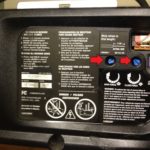How to adjust the down force on your common lift master garage door opener
- Kevin Lee
- Oct 28, 2022
- 3 min read

How to adjust the force on your common Lift master garage door opener.
Have you gone through our maintenance article? Do that first.
If your garage door opener has these 2 little blue dials on it, this article is for you. These are the most common openers in the SF east bay area.
Warnings! Don’t get squished. This is a simple mechanical operation but could still be dangerous. If in doubt, just call a professional. Don’t run the door more than 10 times up and down in 15 minutes. You can overheat it! If your opener is more than 15years old, this number could be as much as 5 times in 15 minutes. It will just go dead for up to a half hour (if you are lucky) Sometimes they can be damaged before the auto-protect shuts them off. (burn out the capacitor or circuit board usually)
Down force – A better way:

Force kickback is when the door hits something it should go back up. People often reason, there can’t be something in the way or the photo eyes wouldn’t let the door go down.
The answer is: to prevent damage to the door itself primarily. Car Bumpers, SUV hatches left open, and garbage cans are probably the most likely candidates to get squished and cause damage. But also, broom handles caught in the tracks and other things (you did read our article right? ) Cats have been known to sit on the top of the door and fall asleep. When you press the button, the cat could get squished against the header and the top section (seen it! Ouch, poor kitty – she was ok)
It may also cover a problem w/ the door that would otherwise be noticed earlier. (worn out rollers, door binding against the jambs or tracks,
A 1/2Hp opener set to max will crush a door if loaded off center.
The factory recommended method is to place a 2×4 under the door and make sure it kicks back. – This has some drawbacks in that if the force dial is maxed out in that it may damage the door. ( a 2×4 shaped dent in the bottom of your door!) What the factory isn’t always clear about is that the block needs to be placed directly underneath where the opener mounts. 99% of the time this is centered. but in some cases, not uncommon is that the opener is mounted slightly or completely off center. Mechanically, there’s no way for the opener to compensate for far asymmetric loading and it could easily knock the door off the tracks.
The empirical way: Turn the dial up one number past the minimum it takes for the door to run without kicking back.
Walkthrough:
Turn the force down to about 25% of the dial. Run the door. If it stops at some point during the down stroke and goes go back then turn it up just a little bit, usually about ½ to 1 whole number on the dial is pretty good.
Check it the scientific way: – Straddle the eyes w/ a short table and measure w/ an analog bathroom scale. If it breaks the table…it’s too high and it’s a good thing you checked it. Bathroom scales as a rule require all 4 feet to be on something flat. Most stools aren’t quite this big. A small table or hanging it off the tailgate of a pickup bed may work as well. You want it about 5lbs. (a professional will just bump it with his shoulder, but, that sounds like a lawsuit if we tell you to do that doesn’t it?)





Comments